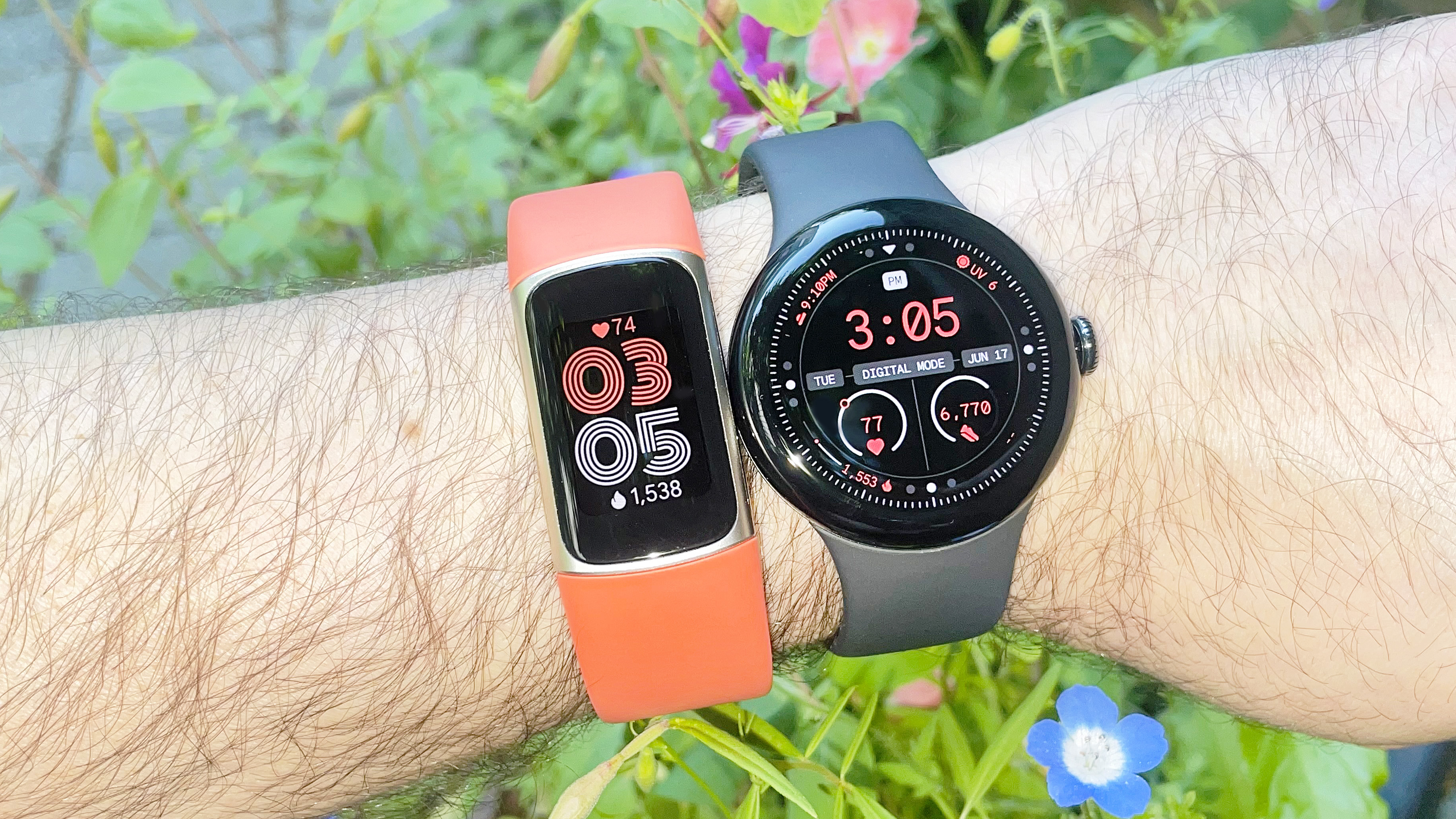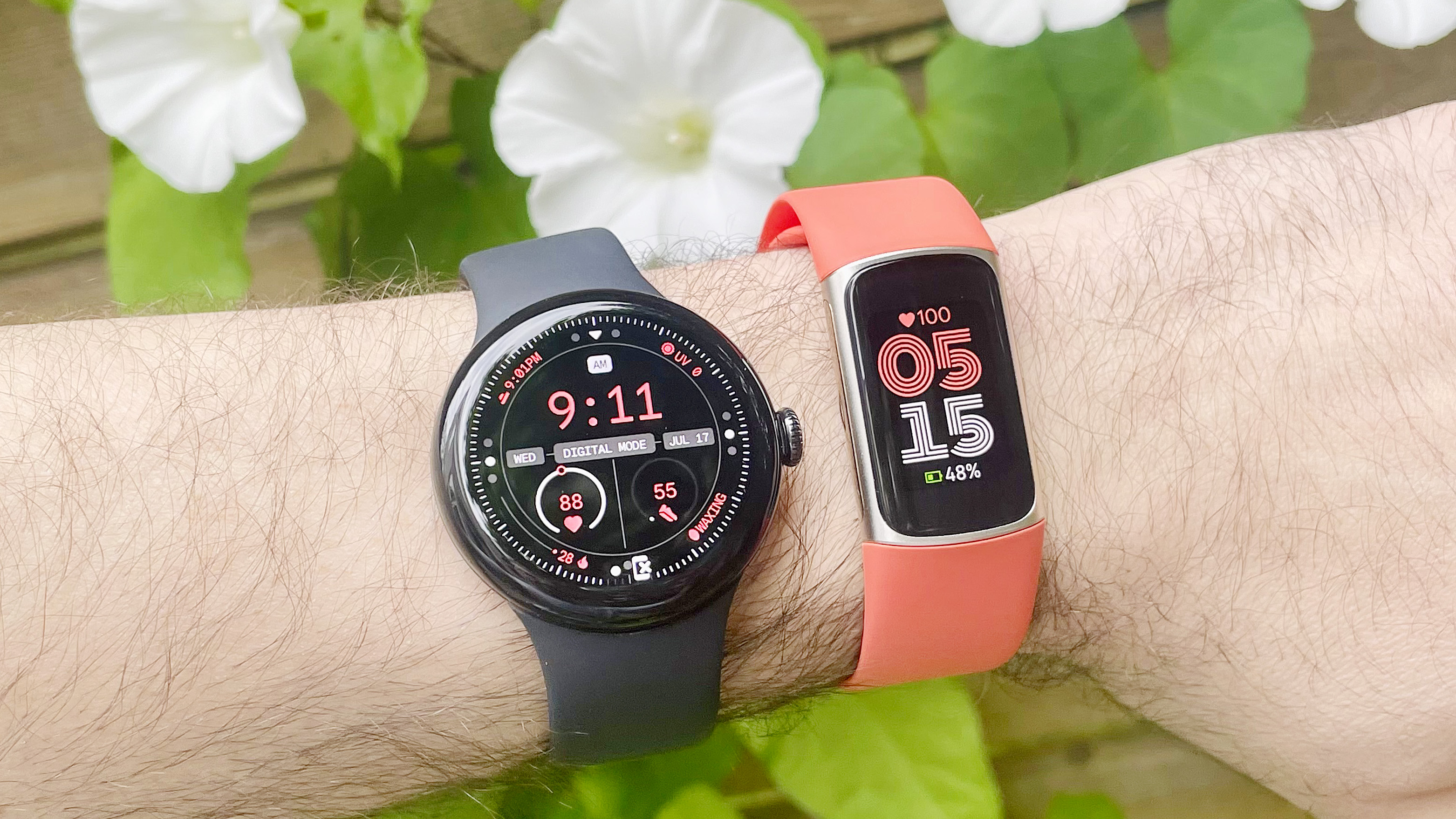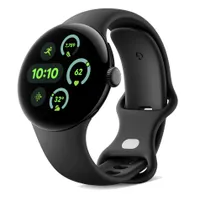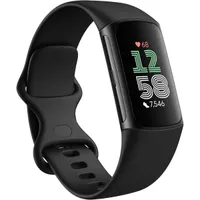I walked 6,500 steps with the Fitbit Charge 6 vs Pixel Watch 3 — and I’m surprised by the winner
Both have Fitbit DNA, but which is the more accurate wearable?

Want the best Fitbit available today? Your choices come down to the Fitbit Charge 6 and Google Pixel Watch 3. Both devices are powered by Fitbit and produced by Google, but that's where the similarities end.
The Fitbit Charge 6 was announced in 2023 and remains the brand's flagship band-style fitness tracker. The Pixel Watch 3, meanwhile, launched in 2024 and is Google's one and only smartwatch offering, though it comes in two sizes.
For this test, I pitted the smaller 41mm Pixel Watch 3 ($349) against the Fitbit Charge 6 ($159). With Google winding down the Fitbit brand, there's a good chance that the Charge 6 is the end of the road for perhaps the brand's most beloved wearable line.
So, is the Pixel Watch 3 a good replacement for the Charge 6, at least from a fitness tracking standpoint? There's only one way to find out. Let the test begin!
Fitbit Charge 6 vs. Google Pixel Watch 3: Walk test
The Google Pixel Watch 3 is a full-featured smartwatch with all of Fitbit's best fitness tracking and wellness features built in. Though it's considerably more expensive than the Fitbit Charge 6, the Pixel Watch 3 has way more smart features, too. It also works with a gigantic range of third-party apps. The Charge 6 does not.
The Charge 6 could be one of the last devices to bear the Fitbit name. Launched in 2023, this high-end tracker sports a small AMOLED touchscreen and boasts impressive fitness-tracking chops. It also has better battery life than its modern smartwatch cousin and is lighter on the wrist. Did I mention it's also about half the cost of the Pixel Watch?
If you've read my previous walk test articles, you can probably go ahead and skip to the next section. For those new here, this is how these comparisons go down: With a smartwatch on either wrist, I begin tracking my walk. As a control, I manually count each step I take; my favorite Bose Quiet Comfort headphones help drown out the distraction.
To help me keep track of the total, I click an old-school manual tally counter every hundred steps before starting my tally over again at one. In this case, I repeated that process 65 times before finding a nice quiet park bench to settle down on and record the data.
Oh, and as an extra control, I recorded the walk using Strava on my trusty iPhone 12 Mini. Check out the results below:
Get instant access to breaking news, the hottest reviews, great deals and helpful tips.
Fitbit Charge 6 vs. Google Pixel Watch 3: Walk test results
| Header Cell - Column 0 | Fitbit Charge 6 | Google Pixel Watch 3 | Control |
|---|---|---|---|
Step count | 6,546 steps | 6,563 steps | 6,500 steps (manual count) |
Distance | 3.01 miles | 3.4 miles | 3.41 miles (Strava) |
Elevation gain | no data | 325 feet | 303 feet (Strava) |
Average pace | 22 mins, 21 secs per mile | 19 mins, 48 secs per mile | 18 mins, 20 secs per mile |
Average heart rate | 114 bpm | 114 bpm | n/a |
Max heart rate | 164 bpm | 164 bpm | n/a |
Calories burned | 527 calories | 529 calories | n/a |
Device battery usage | + 1% | - 9% | n/a |
Well, well, well — look at which device was closer to my actual step count total by a whole 17 steps; it's the Fitbit Charge 6. For what it's worth, both devices beat Strava's tally of 6,558 steps.
Unfortunately for the small but mighty Charge 6, things get a little funky when we move on to distance data. Despite nailing my step count total with impressive accuracy, the device appears to have severely undercounted my distance covered by a whopping 0.4 miles... that's not an insignificant difference.
The Fitbit Charge 6 frustratingly also does not report elevation gain data, even though it technically could using the onboard GPS. And while I didn't intend for this walk to be hilly, living in Seattle, Washington, a few hundred feet of elevation gain is par for the course when cruising around town on foot.
The Pixel Watch 3 does report climb data, which looks perhaps a tad inflated for this walk — I tend to trust Strava as the gold standard here — but still accurate enough for my needs.

Of course, had the Pixel Watch 3 undercounted my climb by 22 feet (compared to Strava), I might not be so forgiving.
Strava provides two pace metrics including an average moving pace — reported above — and an elapsed pace, which tends to be slower. In this case, my elapsed pace was 19 minutes and 15 seconds per mile, much closer to the Pixel Watch 3's metric.
Inflated pace data from the Fitbit Charge 6, meanwhile, makes sense given it measured a considerably shorter walk, distance-wise.
Nothing warms my heart more than two devices capturing similar heart rate data during these head-to-heads, and it doesn't get any more precise than this. The same goes for calories burned.
Finally, while the Pixel Watch 3 burned through 9% of its battery during my roughly one-hour-and-seven-minute walk, the Charge 6 somehow managed to gain 1% battery (from 98% when I left to 99% when I returned).
Fitbit Charge 6 vs. Google Pixel Watch 3: Winner

In today's battle of the Fitbit-powered Google wearables, the underdog Charge 6 comes out on top. However, even though the Fitbit Charge 6 managed a closer step count total to my manual count, the Pixel Watch 3 proved more accurate across the board.
Still, I'm impressed that the older, more affordable wearable was able to keep up with the newer and higher-end Pixel Watch 3. Ultimately, the Charge 6 remains one of the best fitness trackers for the money in 2025, especially if you like easy-wearing devices with great battery and onboard GPS so that you can leave your phone at home.
Which fitness trackers and/or smartwatches should I test head-to-head next? Let me know in the comments below.
More from Tom's Guide
- I walked 6,000 steps with the Apple Watch 10 vs Samsung Galaxy Watch 7 — this one was more accurate
- I biked 12 miles with the Apple Watch 10 vs Garmin Vivoactive 6 — here's the winner
- I test smartwatches for a living — and these are my 5 favorite models when I go hiking

Dan Bracaglia is the Tom’s Guide editorial lead for all things smartwatches, fitness trackers and outdoor gear. With 15 years of experience as a consumer technology journalist testing everything from Oura Rings to instant cameras, Dan is deeply passionate about helping readers save money and make informed purchasing decisions. In the past year alone, Dan has assessed major product releases from the likes of Apple, Garmin, Google, Samsung, Polar and many others.
An avid outdoor adventurer, Dan is based in the U.S. Pacific Northwest where he takes advantage of the beautiful surroundings every chance he gets. A lover of kayaking, hiking, swimming, biking, snowboarding and exploring, he also makes every effort to combine his day job with his passions. When not assessing the sleep tracking and heart rate accuracy of the latest tach gadgets, you can find him photographing Seattle’s vibrant underground music community.
You must confirm your public display name before commenting
Please logout and then login again, you will then be prompted to enter your display name.


